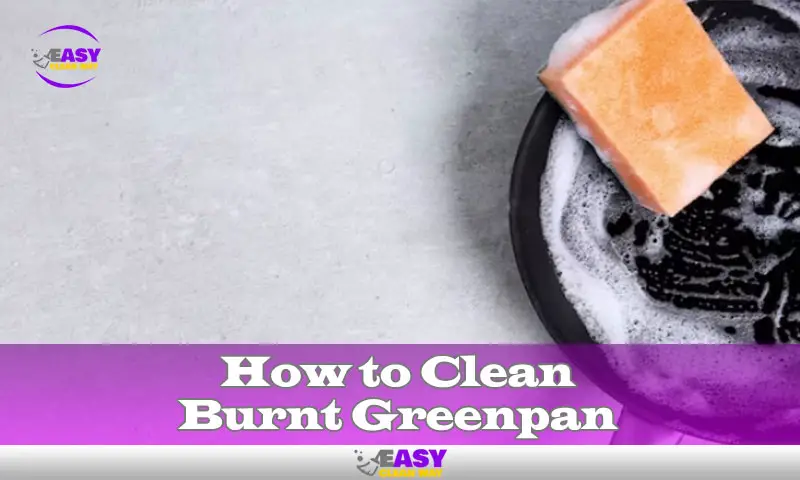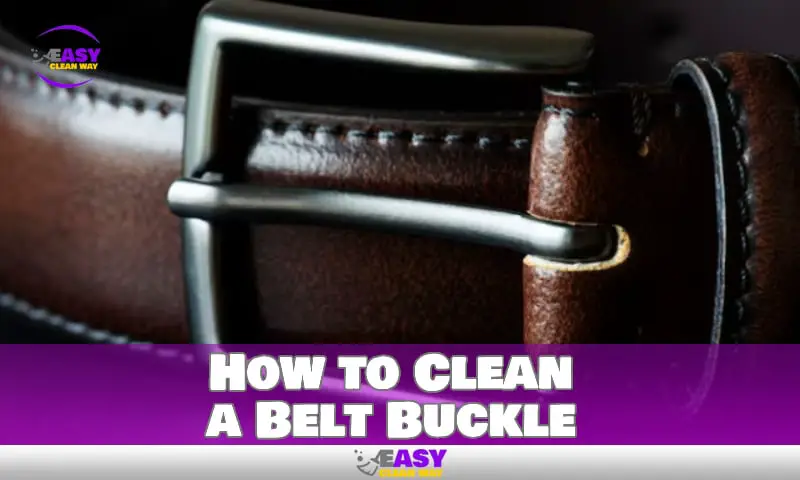To clean a pool skimmer, remove the basket, empty it, and rinse it thoroughly. Then, use a brush to clean the skimmer housing, ensuring it is free from debris and blockages.
Understanding The Importance Of A Clean Pool Skimmer
A pool skimmer plays a crucial role in maintaining the cleanliness of your pool water. It acts as the first line of defense against debris, leaves, and other contaminants that may find their way into your pool. A clean pool skimmer ensures that the water remains crystal clear, preventing the accumulation of dirt and enhancing the pool’s overall appearance.
Moreover, a well-maintained pool skimmer also contributes to the optimal performance of your pool equipment. Let’s delve into its significance further.
The Role Of A Pool Skimmer In Maintaining Water Cleanliness
- Efficient water filtration: The pool skimmer traps large debris such as leaves, grass, and insects before they sink to the bottom of the pool. This prevents unsightly residue and minimizes the amount of dirt that needs to be vacuumed or manually removed.
- Controlling algae growth: Algae tend to form in stagnant water or areas with poor circulation. A functioning skimmer skims the surface, drawing in water and ensuring continuous circulation, effectively reducing the chances of algae proliferation.
- Removal of oils and suntan lotions: Skimmers capture oils and lotions that accumulate on the water surface, preventing them from forming a greasy film. This promotes a clean and inviting swimming experience for you and your guests.
- Enhanced efficiency of pool chemicals: A clean skimmer helps distribute pool chemicals more evenly throughout the pool, improving their effectiveness. This enables you to maintain the appropriate chemical balance and avoid issues such as cloudy water or algae blooms.
The Impact Of A Dirty Pool Skimmer On Water Quality And Equipment Performance
- Decreased water circulation: When the skimmer is clogged with debris, water circulation is hindered, which can lead to stagnant areas where contaminants can settle. This compromises the overall cleanliness and clarity of the pool and may require additional maintenance efforts.
- Strain on the filtration system: A dirty skimmer puts strain on the pool’s filtration system, reducing its efficiency. This can result in the system running longer and working harder to maintain water quality, potentially leading to increased energy consumption and wear on the equipment.
- Reduced lifespan of pool equipment: The debris accumulated in a dirty skimmer can also find its way into other pool equipment, such as the pump and filter. This can cause blockages and damage over time, leading to costly repairs or replacements.
- Increased chemical demand: A poorly functioning skimmer may require higher chemical doses to maintain water quality, leading to increased chemical expenses. It is always more cost-effective to have a clean skimmer that aids in the proper distribution of chemicals, ensuring their optimal utilization.
A clean pool skimmer should be an essential part of your regular pool maintenance routine. By understanding its importance and keeping it clean, you can enjoy a sparkling clean pool and prolong the lifespan of your pool equipment, all while minimizing maintenance efforts and expenses.
Gathering The Necessary Tools And Material

Cleaning your pool skimmer regularly is essential to ensuring that your pool stays clean and well-maintained. To effectively clean your pool skimmer, you will need the following tools:
- Pool skimmer net: This is a versatile tool designed specifically for removing debris and leaves from your skimmer basket. It has a fine mesh net that traps even the smallest particles, preventing them from entering your pool.
- Skimmer brush: A skimmer brush is used to clean the walls and bottom of your skimmer. It helps to remove dirt and grime that can accumulate over time, ensuring optimal skimmer performance.
- Garden hose: A garden hose is necessary for rinsing off the skimmer basket and removing any leftover debris. It provides a steady stream of water to help dislodge trapped particles.
- Screwdriver: In some cases, you may need a screwdriver to remove the skimmer lid or access the skimmer basket for cleaning. Make sure to have a suitable screwdriver on hand if necessary.
Recommended Cleaning Solutions And Materials
In addition to the essential tools mentioned above, using the right cleaning solutions and materials can greatly enhance your pool skimmer maintenance routine. Here are some recommendations:
- Pool enzyme cleaner: An enzyme cleaner is a powerful cleaning solution specifically formulated to break down organic matter, such as oils, dirt, and scum, that may accumulate in your skimmer. It helps keep your skimmer operating at peak efficiency.
- Vinegar: Vinegar is a natural cleaning agent that can effectively remove mineral deposits and stains from your skimmer basket and walls. It is eco-friendly and safe to use in your pool.
- Water-based lubricant: Applying a small amount of water-based lubricant to the o-rings and seals of your skimmer can help prevent leaks and ensure a tight seal. This can extend the lifespan of your skimmer and improve its overall performance.
- Cleaning brush: A cleaning brush with soft bristles can be used to scrub away any stubborn debris or residue from the skimmer basket and walls. Choose a brush that is specifically designed for pool skimmer cleaning to avoid damaging the surfaces.
Remember, regular cleaning and maintenance of your pool skimmer are essential for keeping your pool clean and clear of debris. By using the right tools, cleaning solutions, and materials, you can ensure that your pool skimmer continues to function optimally and provide you with a sparkling, clean swimming experience.
Step 1: Switch Off The Pool Pump
Before diving into the process of cleaning the pool skimmer, it is crucial to understand why it is important to switch off the pool pump. This step ensures both the safety of the individual performing the maintenance and the proper functioning of the skimmer itself.
Here are key points to consider:
- Preventing injuries: Turning off the pool pump reduces the risk of accidents and injuries while handling the skimmer. The pump can suck in debris or objects, causing harm to those working on it. By switching off the pump, you minimize the chances of getting caught in the moving parts.
- Avoiding damage to the pump: Cleaning the skimmer with the pump still running can cause unnecessary strain on the pump motor. The debris flowing through the skimmer while the pump is operational can potentially clog or damage the impeller or motor. By turning off the pump, you ensure its longevity and avoid costly repairs.
- Efficient cleaning: When the pump is off, there is no suction pulling water into the skimmer, which allows for better access to clean out any debris or leaves. This ensures a more thorough cleaning process and helps maintain the pool’s water quality.
Safety Precautions To Consider When Handling The Pool Pump
Now that we understand the importance of turning off the pool pump, it’s vital to take additional safety precautions to ensure a secure cleaning process. Here are some key points to remember:
- Disconnect the power: Before starting any maintenance on the pool pump, make sure to disconnect its power source. This ensures that there is no risk of electric shock or injury during the cleaning process.
- Verify water flow: After switching off the pump, wait for a few minutes to make sure that the water flow has stopped completely. This prevents water from surging back through the skimmer and potentially causing injury.
- Pump priming: Familiarize yourself with the process of priming the pump before starting it up again. Following the manufacturer’s instructions, prime the pump to ensure proper functioning and avoid any potential airlocks.
- Protective gear: When handling the pool pump, it is recommended to wear protective gear such as gloves and safety goggles. This will safeguard against any potential debris or chemicals splashing onto your skin or eyes.
- Regular maintenance: Incorporating regular pool pump maintenance into your routine can help mitigate potential issues and ensure the pump operates optimally. Regularly clean out the pump basket, check for debris, and inspect for any signs of wear or damage.
By following these safety precautions and turning off the pool pump before cleaning the skimmer, you create a safer environment for yourself while maintaining the integrity of the equipment. Remember, safety should always come first when dealing with pool maintenance.
Step 2: Remove The Skimmer Basket
Before removing the skimmer basket, it is important to locate and access it properly. Here are the key steps to follow:
- Look for the pool skimmer, which is usually located on the side of the pool, close to the water’s surface.
- Identify the skimmer lid or cover, which is usually circular and made of plastic or metal. It may be labeled as a “skimmer” or have a small handle for easy removal.
- Remove any obstacles or debris around the skimmer lid to ensure easy access.
- Check if the pool pump is turned off to avoid any accidents or injuries while removing the skimmer basket.
Once you have properly located and accessed the skimmer basket, you can proceed to the next step.
How To Safely And Efficiently Remove The Skimmer Basket
Removing the skimmer basket is a crucial step in cleaning your pool skimmer. Follow these guidelines to safely and efficiently remove the skimmer basket:
- Carefully grip the skimmer lid or cover and twist it counterclockwise to unlock it. Keep in mind that some lids may require additional force or tools for removal, so be gentle yet firm.
- Slowly lift the skimmer lid or cover off the skimmer opening. Be cautious of any residual water that may spill out.
- Locate the skimmer basket inside the skimmer opening. It is usually a plastic or mesh container that collects debris and prevents it from entering the pool’s filtration system.
- Once you have identified the skimmer basket, gently lift it out of the skimmer opening. Take care not to tilt it too much, as any debris collected inside may fall back into the pool.
- Inspect the skimmer basket for any visible signs of damage or wear. If necessary, replace the skimmer basket with a new one to ensure optimal performance.
- Take this opportunity to clean the skimmer basket by rinsing it with a hose or soaking it in a bucket of water mixed with the pool cleaner.
- After cleaning the skimmer basket, carefully place it back into the skimmer opening, ensuring that it fits securely.
- Firmly press the skimmer lid or cover back onto the skimmer opening and twist it clockwise to lock it in place.
By following these steps, you can easily remove the skimmer basket from your pool skimmer, allowing for proper cleaning and maintenance. Remember to always prioritize safety and ensure that the pool pump is turned off before performing any maintenance tasks.
Step 3: Empty And Clean The Skimmer Basket
When it comes to maintaining a clean and healthy pool, regularly emptying and cleaning the skimmer basket plays a crucial role. The skimmer basket is responsible for trapping debris and preventing it from clogging the pool’s filtration system. By following the correct cleaning methods, you can ensure that your skimmer basket remains efficient in its function.
Here are the key points to consider:
Remove debris promptly:
- Cleaning the skimmer basket regularly prevents the accumulation of debris, ensuring proper water flow in the pool.
- Prompt removal of debris helps prevent clogging and potential damage to the pool pump.
Enhance filtration efficiency:
- An empty and clean skimmer basket allows the filtration system to work optimally, improving the overall clarity and quality of the water.
- Unclogged skimmer baskets ensure effective removal of leaves, insects, and other unwanted materials from the pool.
Prevent blockages:
- Regular maintenance of the skimmer basket helps prevent blockages in the pool’s plumbing system.
- A blocked skimmer basket can lead to restricted water flow, affecting the pool’s circulation and filtration.
Prolong equipment lifespans:
- By taking care of your skimmer basket, you also extend the lifespan of your pool’s pump and other equipment.
- When the skimmer basket is clean and debris-free, it puts less strain on the pump, reducing the risk of premature wear and tear.
- Ensure pool safety:
- When debris accumulates in the skimmer basket, it can create a breeding ground for bacteria and algae.
- Regularly emptying and cleaning the skimmer basket helps maintain proper water sanitation and reduces the risk of waterborne illnesses.
Remember, a well-maintained skimmer basket is essential for the efficient functioning of your pool’s filtration system. By following the proper cleaning methods and emptying the skimmer basket regularly, you can keep your pool clean, clear, and safe for swimming. So, make it a part of your regular pool maintenance routine and enjoy crystal-clear water all season long.
Step 4: Inspect And Clean The Skimmer Area
When it comes to maintaining a clean and sparkling pool, inspecting and cleaning the skimmer area is a crucial step. The skimmer plays a vital role in keeping your pool water clean by collecting leaves, bugs, and other debris that float on the surface.
Here are the key points to keep in mind when examining the skimmer area for any additional debris or blockages:
- Start by removing the skimmer basket from the skimmer housing. Carefully empty the contents of the basket into a trash bag or compost bin.
- Inspect the skimmer housing for any visible debris or blockages. Leaves, twigs, and other debris can accumulate here and hinder the skimmer’s performance.
- Use a handheld skimmer net or pool brush to remove any debris that may be stuck in the skimmer housing. Be careful not to damage the skimmer or its components while doing so.
- Check the skimmer door or weir to ensure it is functioning properly. The skimmer door helps regulate the flow of water into the skimmer, and if it’s stuck or damaged, it can affect the skimmer’s efficiency.
- Pay attention to any signs of wear or damage on the skimmer components. Cracked lids, broken baskets, or loose screws should be addressed and repaired to ensure the skimmer functions optimally.
Remember, a clean and well-maintained skimmer area is essential for the overall health of your pool. By regularly examining and cleaning the skimmer area, you can ensure that it operates at its best, keeping your pool water pristine and inviting.
Properly Cleaning The Skimmer Area To Ensure Optimal Performance
Cleaning the skimmer area is not only about removing visible debris but also ensuring optimal performance. After examining the skimmer area for any additional debris or blockages, follow these key steps to properly clean the skimmer area and maintain optimal functionality:
- Use a hose or pressure washer to rinse the skimmer housing thoroughly. This helps remove any remaining debris and build-up that may not be visible to the naked eye.
- Clean the skimmer basket by soaking it in a solution of mild detergent and water. Use a soft brush to scrub away any dirt or grime. Rinse it thoroughly and allow it to dry before placing it back in the skimmer housing.
- Inspect the skimmer lid or cover for any signs of wear or damage. Replace any cracked or broken lids to prevent debris from entering the skimmer area.
- Check the skimmer gasket for any leaks or gaps. A properly sealed skimmer ensures efficient operation and prevents water from bypassing the skimmer.
- Lastly, reassemble the skimmer components and ensure everything is properly secured. Tighten any loose screws or fittings to avoid potential issues.
By following these steps, you can ensure that your skimmer area is not only clean but also functions optimally. A well-maintained skimmer plays a crucial role in keeping your pool clean and clear, providing you with an enjoyable swimming experience.
Step 5: Reassemble And Restart The Pool Pump

Once you have successfully cleaned the skimmer basket, it is time to reinsert it back into the skimmer and restart the pool pump. Follow these steps to ensure a safe and effective restart:
Reinserting The Cleaned Skimmer Basket Back Into The Skimmer
- Carefully place the clean skimmer basket back into its designated compartment in the skimmer.
- Ensure that the basket fits securely and snugly in place to prevent any debris from bypassing it.
- Double-check that the basket is aligned properly, as any misalignment could hinder its effectiveness.
Tips For Restarting The Pool Pump Safely And Effectively
- Before turning on the pump, make sure the skimmer lid is securely fastened to avoid any accidents or water leaks.
- Open any valves that were closed during the cleaning process to allow for proper water flow.
- Slowly turn on the pool pump to avoid overwhelming the system and causing potential damage.
- Monitor the pressure gauge and ensure it stabilizes within the normal range after the pump is running.
- Check for any signs of leaks or unusual noises coming from the pump, and promptly address any issues if detected.
- If you notice air bubbles in the pump or weak water circulation, there may be an air leak or debris clog in the system. Turn off the pump and investigate the problem before proceeding.
- Periodically check the skimmer to ensure it continues to collect debris effectively. If you notice any blockages, remove them promptly to prevent further issues.
Remember, proper reassembly and a safe restart are crucial to maintaining the efficiency and longevity of your pool pump. Follow these steps carefully to keep your pool water clean and enjoyable for swimming.
Keep in mind that regular maintenance of your pool skimmer, including cleaning the skimmer basket, is essential for optimal pool performance. Implementing these steps will not only improve the efficiency of your pool pump but also contribute to the overall cleanliness and clarity of your pool water.
FAQs
How Often Should I Clean My Pool Skimmer?
Clean your pool skimmer at least once a week to ensure optimal performance and prevent clogs.
What Tools Do I Need To Clean A Pool Skimmer?
You will need a skimmer net, a brush, a pool vacuum, a water hose, and a pool chemical test kit.
Can I Clean The Pool Skimmer While The Pump Is Running?
No, it is important to turn off the pool pump before cleaning the skimmer to avoid any accidents and injuries.
What Are The Signs That My Pool Skimmer Needs Cleaning?
If you notice reduced water flow, debris floating in the pool, or difficulty maintaining proper chemical levels, it may be time to clean your skimmer.
Conclusion
Maintaining a clean pool skimmer is essential for the overall efficiency and effectiveness of your swimming pool. Regular cleaning not only ensures optimal circulation and filtration but also extends the lifespan of your pool equipment. By following the simple steps outlined in this article, you now have the knowledge and understanding to effectively clean your pool skimmer.
Remember to regularly remove debris, clean the basket, and inspect the skimmer for any signs of damage. Keep in mind that a clean skimmer will result in better water quality, reduced maintenance, and an overall enjoyable swimming experience. So, take the time to incorporate these cleaning techniques into your pool maintenance routine and reap the benefits of a clean and well-functioning pool skimmer.
Hey there! I’m Alton Smith, your Clean Expert blogger. I’m on a quest to help you conquer chaos and embrace the joys of a tidy life.





